HELLO + WELCOME as we drive from Sydney to London, via Africa.
It’s Kirsty typing today.
![]()
When chatting with a Rwandan we were told “You must feel safe in Rwanda. Leave your car anywhere and it will be left alone”. “Why is it so safe here in Kigali? I asked, intrigued. “Because we have suffered enough”
In the days following we visited the country’s genocide memorials and came to understand what he meant.
![]()
In 1994, 800 000 innocent people were brutally murdered in under 100 days in Rwanda.
At the National Genocide Memorial we learnt that a propaganda campaign segregated and seasoned Hutu against Tutsi.
What was the difference between a Tutsi and a Hutu person? Well, during Belgian rule, missionaries reinforced an ethnic divide between the two. Got 10+ cows? You were a Tutsi. Got less than 10 cows? You were a Hutu. As demonstrated by much of religious history this enabled the faction to divide and conquer.
The memorial taught us that the population was majority Hutu. And within that majority, a minority of elite Hutu communicated that the Tutsi’s were to blame for all of their social and political problems. A Hutu ruled the country and when the president’s plane was shot down on the 6th of April 1994 the country broke into ‘civil war’.
The war was in fact a cover for a planned genocide. The country’s elite Hutu, in government power, had been in “rehearsal” for genocide and the French Government backed their purchase of millions of dollars worth of arms. The ‘civil war’ namesake meant that United Nations left the country, as did most non-citizens.
To the Western world Africa was having another crisis; and we distracted ourselves by mourning a musician had killed himself yep, Kurt Cobain committed suicide 2 days prior.
As we walked through the memorial we couldn’t help but think what we were doing at the time when it happened. I was ten years old. I was probably choreographing dances to Girlfriend and complaining to my mum about having to go to swimming training.
There was a room in the memorial filled with photos of people who lost their lives. To see that many faces staring at you was overwhelming.

:: The National memorial is home to a mass grave of over 250,000 individuals
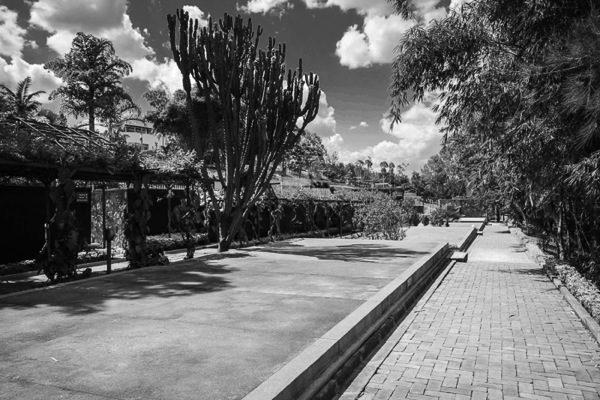
:: The grave sites
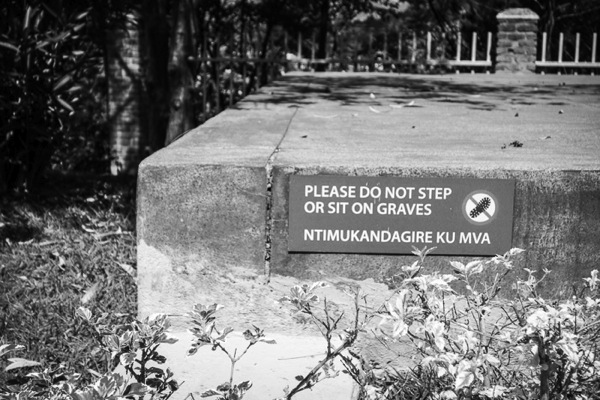
:: Mind your step
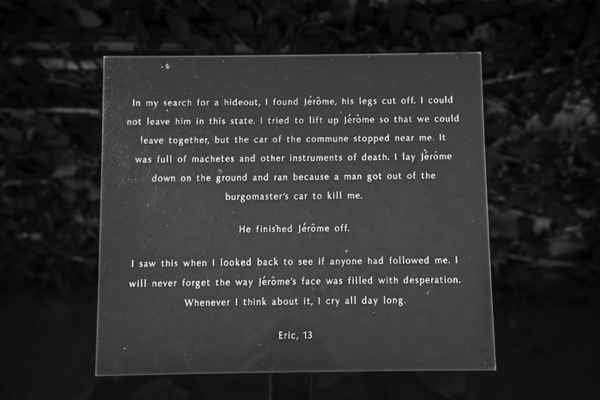
:: Personal stories were told by genocide victims
![]()
It’s only twenty years since the genocide. The country has reconstructed itself in an incredible manner. But still… with half a million of Rwanda’s women having been raped and nearly every person over 20-years having seen someone murdered, you can’t help but wonder at what extreme suffering lays at each person’s core.
We wanted to understand more and drove out to Nyamata Church where we met Anita.
I struggle for the words to describe the next couple of hours with her. Heart wrenching sounds so Hollywood. Painful sounds like I might actually understand, and there’s no way I can. Shocking just doesn’t cut it.
During the genocide thousands of people came to Nyamata Church to shelter believing the militia would dare not attack.
When we walked into the church we saw thousands of blood stained clothes piled on top of the pews that had been pulled off the 10,200 people who died inside. We saw light streaming in through the grenade holes in the roof. We saw Tutsi identity cards and machetes. We saw a wall covered in dried blood where “babies were smashed against the bricks”.
We were led to the church crypt where we saw a coffin. After asking about the coffin I wished I hadn’t. The lady inside had been tortured in the most unimaginable ways. Speared through her cervix to her head and from her chest to the baby she carried on her back – after being raped.
When I asked about Anita’s life she told us how her mother and sister were killed in front of her. By some miracle she found her baby sister crying, she grabbed her and ran. She told us she still sees the killers walking down the street, “It is very hard to forgive, but our government says we must try”
That evening we stopped nearby. Trying to process what we had just experienced we spoke with a staff member. His smile turned into a distance gaze, “All of my family were killed. I am an orphan because of it”. He pointed to the streets in front of us and said “As soon as the United Nations pulled out 6000 people we killed right there. The street was streaming with blood”

:: Nyamata mass grave where 40,300 individuals lay

:: We walked underground into one of the mass graves, human skulls were laid. The skulls go back at least 20 rows from where the darkness reaches. Note: The holes and fractured skulls.
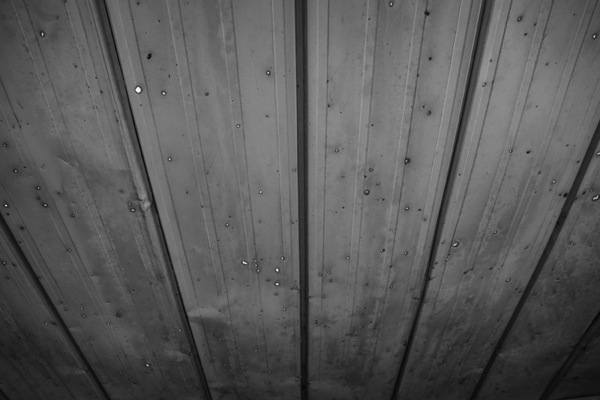
:: Holes in the roof of the church left by grenades exploding
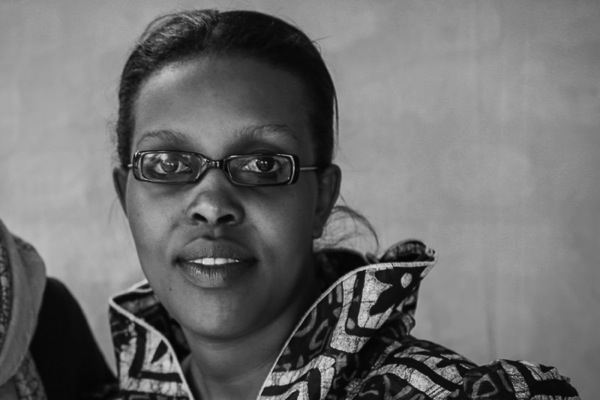
:: Anita
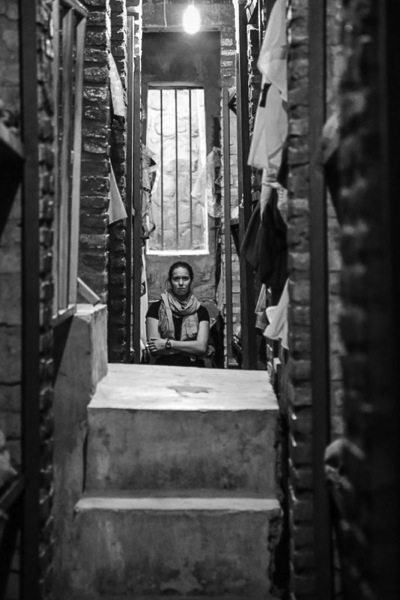
:: Breathing in the dead air of the mass grave at Nyamata where the bones of 40,300 people are laid out
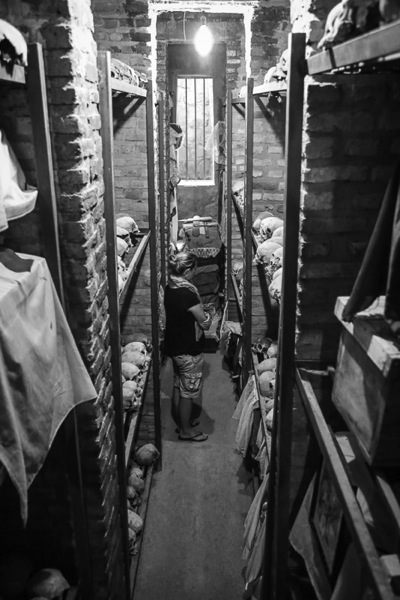

:: Contemplating the days overlooking the flickering lights of Kigali
![]()
The horror and pain of the genocide is something Gareth and I cannot comprehend. Quite frankly it’s a frightening to think about what humans are capable of.
Our days spent learning about the genocide and visiting memorials were very difficult. I shed many tears, Anita handed me tissues and I felt like a right fool. Gareth swallowed back a few tears also.
The fact that Rwanda has pulled itself together in such a short period of time is truly remarkable.
Cheers,
![]()


Bloody hell….how can we live in a world…where every kick of a soccer ball is shared widely. Such a devastating thing happens and we don’t even hear about it. Kirsty you have written this so well, it makes me both sick to the stomach and oh so sad. Thanks for bringing greater awareness.
Well written Kirsty very sad to read.